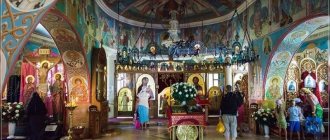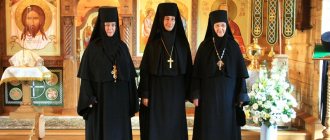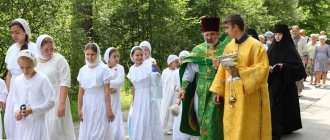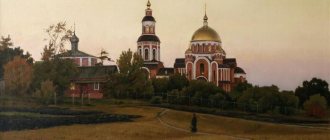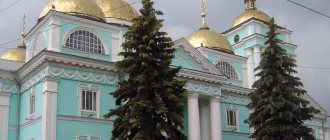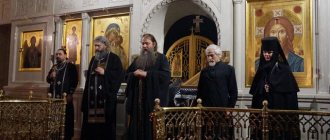Mir
Russia Stavropol Territory St. George Convent (Essentuki) Map is loading…
{"format":"leaflet","minzoom":false,"maxzoom":false,"limit":50,"offset":0,"link":"all","sort":[""], "order":[],"headers":"show","mainlabel":"","intro":"","outro":"","searchlabel":"\u2026 \u0441\u043b\u0435\ u0434\u0443\u044e\u0449\u0438\u0435 \u0440\u0435\u0437\u0443\u043b\u044c\u0442\u0430\u0442\u044b","default":"","import-annotation":false,"width ":"auto","height":"350px","centre":{"text":"","title":"""link":"","lat":44.028289999999998372004483826458454132080078125,"lon": 42.8110199999999991860022419132292270660400390625,"icon":""},"title":"","label":"","icon":"","lines":[],"polygons":[],"circles":[ ],"rectangles":[],"copycoords":false,"static":false,"zoom":8,"defzoom":14,"layers":["OpenStreetMap"],"image layers":[] ,"overlays":[],"resizable":false,"fullscreen":true,"scrollwheelzoom":true,"cluster":false,"clustermaxzoom":9,"clusterzoomonclick":true,"clustermaxradius":80, "clusterspiderfy":true,"geojson":"","clicktarget":"","showtitle":true,"hidenamespace":false,"template":"","userparam":"","activeicon": "","pagelabel":false,"ajaxcoordproperty":"","ajaxquery":"","locations":[{"text":"\u003Cb\u003E\u003Ca href=\"/palomnik/%D0% A1%D0%B2%D1%8F%D1%82%D0%BE-%D0%93%D0%B5%D0%BE%D1%80%D0%B3%D0%B8%D0%B5%D0%B2 %D1%81%D0%BA%D0%B8%D0%B9_%D0%B6%D0%B5%D0%BD%D1%81%D0%BA%D0%B8%D0%B9_%D0%BC%D0 %BE%D0%BD%D0%B0%D1%81%D1%82%D1%8B%D1%80%D1%8C_(%D0%95%D1%81%D1%81%D0%B5%D0% BD%D1%82%D1%83%D0%BA%D1%81%D0%BA%D0%B0%D1%8F)\» title=\»\u0421\u0432\u044f\u0442\u043e-\u0413\ u0435\u043e\u0440\u0433\u0438\u0435\u0432\u0441\u043a\u0438\u0439 \u0436\u0435\u043d\u0441\u043a\u0438\u0439 \u043c\u043e\u0 43d\u0430\u0441\u0442\u044b\ u0440\u044c (\u0415\u0441\u0441\u0435\u043d\u0442\u0443\u043a\u0441\u043a\u0430\u044f)\»\u003E\u0421\u0432\u044f\u0442\u043e- \u0413\u0435\u043e \u0440\u0433\u0438\u0435\u0432\u0441\u043a\u0438\u0439 \u0436\u0435\u043d\u0441\u043a\u0438\u0439 \u043c\u043e\u043d\u0430\ u0441\u0442\u044b\u0440\u044c (\u0415\u0441\u0441\u0435\u043d\u0442\u0443\u043a\u0441\u043a\u0430\u044f)\u003C/a\u003E\u003C/b\u003E\u003Chr /\u003E\u003Ca href =\"/ palomnik/%D0%A1%D0%B2%D0%BE%D0%B9%D1%81%D1%82%D0%B2%D0%BE:%D0%90%D0%BD%D0%BD%D0% BE%D1%82%D0%B0%D1%86%D0%B8%D1%8F\" title=\"\u0421\u0432\u043e\u0439\u0441\u0442\u0432\u043e:\u0410\u043d\u043d \u043e\u0442\u0430\u0446\u0438\u044f\»\u003E\u0410\u043d\u043d\u043e\u0442\u0430\u0446\u0438\u044f\u003C/a\u003E: \u043f\u0 440\u0430\u0432\ u043e\u0441\u043b\u0430\u0432\u043d\u0430\u044f \u0436\u0435\u043d\u0441\u043a\u0430\u044f \u043e\u0431\u0438\u0442\u0435\u0 43b\u044c,\u043e\u0441\u043d \u043e\u0432\u0430\u043d\u043d\u0430\u044f \u0432 2006 \u0433\u043e\u0434\u0443. \u041f\u0440\u0438 \u043c\u043e\u043d\u0430\u0441\u0442\u044b\u0440\u0435 \u0434\u0435\u0439\u0441\u0442\u0432\u0443\u0435\ u0442\u0433\u043e\u0441\u0442 \u0438\u043d\u0438\u0446\u0430.","title":"\u0421\u0432\u044f\u0442\u043e-\u0413\u0435\u043e\u0440\u0433\u0438\u0435\u0432\u0441\ u043a\ u0438\u0439 \u0436\u0435\u043d\u0441\u043a\u0438\u0439 \u043c\u043e\u043d\u0430\u0441\u0442\u044b\u0440\u044c (\u0415\u0441\u 0441\u0435\u043d\u0442\u0443 \u043a\u0441\u043a\u0430\u044f)","link":"","lat":44.028289999999998372004483826458454132080078125,"lon":42.8110199999999991860022419 132292270660400390625,"icon":""}],"imageLayers":[]}
43.936334; 42.858568
Russia, Stavropol Territory, Predgorny Municipal District
Stavropol region
Russia
Phones:
+7-928-362-53-05; +7(87934)6-07-05
St. George Convent (Essentuki)
- Orthodox convent, founded in 2006. There is a hotel at the monastery.
History[edit]
The idea of building a temple on Mount Dubrovka in honor of the Holy Great Martyr George belongs to residents of Essentuki and cousins - Pavel Vladimirovich Muzenitov and Konstantin Maksimovich Aslanov. The place chosen for the construction of the temple is amazing - from the mountain a uniquely beautiful panorama of the Caucasian Mineral Waters opens up in full view.
November 16, 1998, St. George, the blessing of the Metropolitan of the Stavropol and Vladikavkaz Diocese Gideon was received for the construction of the temple and the brothers, with the help of relatives, friends and volunteers, laid down and over the course of several years built a temple here in honor of St. George the Victorious.
Since 1999, Sunday water blessing prayers have been held for the entire period of construction of the temple on Mount Dubrovka.
White marble for cladding the walls of the temple was brought from the Urals; finishing details were carefully selected. Inside the temple there are marble columns and marble floor mosaics, and the eight-pointed Star of Bethlehem is mounted in the floor. And the majestic domes shone with gold.
During the same period, the bell tower was built.
In 2003, Bishop Theophan (Archbishop of Stavropol and Vladikavkaz) blessed the construction of a convent with a shelter for orphan girls. This is how the creation of a new Orthodox monastery began in the North Caucasus. Following the erection of the temple, a chapel, an icon shop and a modern residential building for nuns, novices, pilgrims and pupils of the orphanage were built.
On February 3, 2006, the first nuns arrived at the monastery - the nun of the Maloyaroslavets Chernoostrovsky St. Nicholas Monastery, in the Kaluga region, and now the abbess of the St. George Monastery, Mother Varvara, and two more sisters - nun Antonia and novice Elena. At first, they had to live in a construction trailer and work for the glory of God in the newly created monastery.
On April 11, 2006, the Holy Synod of the Russian Orthodox Church in the Caucasian Mineral Waters (KMS) officially opened the St. George Convent with the appointment of nun Varvara (Shurygina) as the abbess of the monastery. A special feature of the St. George Monastery was the creation of a shelter for girls deprived of parental care. The shelter was born in December 2009, when three children with difficult fates arrived at the monastery.
The painting of the monastery temple began in 2009 and is still ongoing. The monastery already lives a full life on this consecrated land - the garden and vegetable garden are cultivated, cows are milked, cheese is made, icons are painted, girls are raised. The children found affection here and the best conditions for living and studying. But the main thing is prayer. The nuns pray for the whole world, for the Church, for the country, for the people, for everyone who asks them to pray, and they fulfill this obedience carefully, with love for God and people.
Many shrines are located under the shadow of the monastery. This is the miraculous icon of the Most Holy Theotokos “The All-Tsarina”, the icon of the Most Holy Theotokos “Theodore”, particles of the holy relics of the Great Martyr George the Victorious, St. Seraphim of Sarov, St. Jonah of Kiev, St. Luke (Simferopol), and all the Reverend Wives of Diveyevo. Hundreds of believers have already been able to venerate these shrines and receive gracious help and consolation.
Since March 22, 2011, the St. George Convent belongs to the Kislovodsk deanery of the Pyatigorsk and Circassian diocese. The diocese is ruled by Bishop Theophylact of Pyatigorsk and Circassia.
Information for pilgrims
For visitors (both tourists and pilgrims) the monastery is open daily, from 07:00 to 19:00. Only women can stay at the monastery; they must have a passport with a registration stamp.
Pilgrims who wish to stay and work in the monastery can live directly in the monastery, in the premises for pilgrims.
Monument to Saint George the Victorious, © Robert Andreasyan
You can find out the conditions of accommodation or order a sightseeing tour with a story about the history of the monastery and its traditions by phone.
Services are held daily at 8 a.m. and 4 p.m., and on Sundays at 8 a.m. and 8:30 a.m.
Schedule of services at the St. George Convent of Essentuki
Current state[edit]
Currently the monastery is active. Divine services are held regularly in the monastery.
The number of nuns of the monastery is increasing.
Forms of social service are being improved.
Today, an orchard has been planted in the monastery, small raspberry and strawberry plantations have been established, and areas have been cultivated for planting beets, potatoes, carrots, onions, beans, cabbage, and herbs. The sisters keep several cows, chickens, and a small apiary, providing the monastery with dairy products, eggs and honey.
There is an icon painting workshop.
Since 2009, the monastery has been operating a shelter-boarding house “Sofia” for children who find themselves in difficult life situations. The orphanage educates eleven girls from five to fourteen years old. All of them, in the past, in their families, experienced dramatic events that brought them here, so Abbess Varvara does everything to make the children feel loved and surrounded by constant care. The institution employs attentive and sensitive teachers, for whom every day at the shelter is immeasurable mental work and enormous patience. Of course, much attention is paid to the social adaptation of girls in society and their secular upbringing. Children study in the Yasnaya Polyana Village not far from the monastery at school No. 26, preschoolers attend kindergarten No. 41.
Girls also receive musical education at the Essentuki School of Arts. All students study in the art studio “Colorit” at the Municipal Budgetary Institution “City House of Culture”. During the warm season, children go outdoors and visit art museums. Each of the girls became a winner or laureate of city, regional or All-Russian drawing competitions.
Life in the orphanage teaches the pupils to make friends, appreciate the care and love of others, and understand the value of work and knowledge. The sisters treat the girls with great love, because the purpose of setting up a shelter for children is not only to give them shelter and food. The most important thing for little ones is to find a real family here, love, care, and, having warmed their souls, learn to bring love into the world.
Children come to the monastery during school holidays. Girls really enjoy working in obedience classes, going to the forest, caring for animals, drawing, and preparing performances. The sisters also find time to regularly visit large families - they organize small holidays for the children and provide all possible financial assistance.
Shrines of St. George's Convent
The structure of the monastery, which belongs to the Pyatigorsk and Circassian dioceses, includes: the Church of St. George; two chapels - the Archangel chapel, which is used as a place for baptism, and the name of the icon of the “Mother of God” with a bath; a shop with consecrated goods (including icons); residential building for novices, pilgrims and the Sofia shelter.
The main shrine of the St. George Monastery is a particle of the relics of the patron saint of the monastery, the Great Martyr and Victorious George, as well as part of his tunic. In addition, in the temple there are other holy relics, mainly of holy women: the venerable women of Diveevo, the Holy Great Martyr Barbara, the Grand Duchess Elizabeth.
The walls of St. George's Church are decorated with icons with miraculous images, including the image of the Mother of God (“Feodorovskaya”).
Icon shop on the territory of the monastery, © Maxim Esin
One of the most unique shrines of the temple is a wooden cross with particles of the relics of Russian saints sealed into it. The cross was hidden for a long time during Soviet times. It was donated to the temple by Essentuki clergy.
Pilgrims' opinions
People call the monastery a place of prayer. The beauty of the local nature and the unusually bright energy of the temple, built against the backdrop of mountain peaks, are also highly appreciated.
The area is surrounded by flowers and greenery. You can use the spring equipped here, in which holy water flows, and visit the miraculous bath. The church shop generously offers freshly baked pies. They were prepared by the local novices.
Not long ago, a statue of St. George the Victorious, whose name it bears, appeared in the monastery. The development of the project continues at an intensive pace. Now another of the buildings is being erected.
Pilgrims also call the monastery a clean and bright place. Here the soul opens wide thanks to good and powerful energy. The fundamental building has a solemn appearance. Snow-white marble provides a special perception, so the very appearance of the building already evokes great emotions.
People come here for answers to spiritual questions and find solace and support here. The monastery contains pieces of holy relics and powerful miraculous icons. The powerful energy of these places does not leave any visitors indifferent.
Beautiful place
The North Caucasus impresses with many beautiful places that can delight every person. The majestic landscapes of these places were sung by many artists and poets.
Against the background of magnificent landscapes, it is difficult not to pay attention to the building, which harmoniously merges with the architecture of nature. Here the grace of the Lord and the greatness of Mineral Waters are united. The name of this spiritual oasis is St. George's Monastery. Mount Dubrovka is the ideal place for this refuge.
At the 35th kilometer of the federal highway there is this white stone temple. The marble for its construction was brought from the Urals. The monastery was built on the top of one of the hills. It is surrounded by majestic mountains, covered with a blue haze, like a lace veil. At the foot of the hill there are green meadows and flowering gardens. A village can be seen in the distance. You will see approximately this picture when you arrive at this wonderful place.
Architecture and interior: main temple and bell tower
The main temple of the St. George's Monastery is made in the Byzantine style. The majestic, monumental building is made of red brick and lined with white Ural marble. In plan it looks like a cross, above the crosshairs of which there is a large light drum topped with a semicircular dome. On the eastern façade, the building is adjoined by a semicircular apse. The exterior decoration of the temple is characterized by minimalism and strict lines.
Temple in honor of St. George the Victorious
The interior decoration was completed in 2012. The marble theme is repeated in the floor covering and the columns supporting the dome, which are richly decorated with gilded carvings. Carved iconostasis, paintings and most of the icons made by local craftsmen under the leadership of Vyacheslav Simakov and Andrei Bukhnikashvili. A large gilded chandelier hangs under the dome of the church. The floor of the central part is decorated with the Star of Bethlehem laid out in marble.
Inhabitants of the monastery
The holy place was created as a shelter for women. The construction of a large nursing building was planned here, the unusual architecture of which impresses with its beauty. Red brick was used to create the walls of this building.
The beautiful and majestic monastery ensemble is today considered the only stronghold of monasticism for women in the Caucasian Mineral Waters.
Activities of the parish
The monastic community spends its time in work and prayer. The nuns are engaged in various activities and are also involved in raising girls living in the monastery orphanage.
Divine services
Church services are held daily in the temple. You can attend them twice a day: at 8.00 and 16.00. In addition, the sisters make a religious procession around the monastery every day, offering prayers for peace and tranquility in the Caucasian land.
Divine service at St. George's Monastery
The schedule of services changes on patronal feast days - May 6 and November 16.
Social service
At the monastery of St. George in Essentuki there is a shelter for girls “Sofia”. Eleven girls left without family care live there. The girls' ages range from 5 to 14 years. The nuns surround them with love and care, providing them with the opportunity for full, comprehensive development and social adaptation. Children attend a Soviet school and kindergarten; in urban educational and development centers they study music, drawing, and dancing.
In the summer, city girls come to the monastery camp. They help care for plants in the monastery garden, go on excursions, go plein air, and participate in theatrical performances.
The nuns visit large families and help women in crisis situations.
Economic activity
On the territory of the monastery, the nuns grow vegetables and fruits for themselves and for sale in the monastery shop. They also raise chickens, take care of several cows and maintain a small apiary. The nuns and pupils work in the icon-painting workshop and make candles.
Interior of St. George's Church

